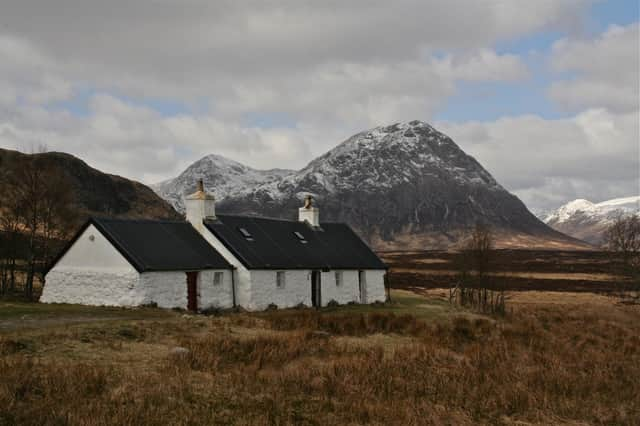The ancient landscape of the Highlands helped shape my view of the world - Paul Murton


Backing onto Beinn Ruadh where my father’s ashes were scattered by the Atlantic winds, my childhood home looked south and west towards the Firth of Clyde and the Lowlands, while to the north, craggy hills rose in steep waves towards the mountains of the Arrochar Alps and Breadalbane.
As a student at the University of Aberdeen, I was continually drawn west to the mountains of the Mounth and the Cairngorms, spending weekends and holidays hitch-hiking to find the freedom of the high places, clearing my mind of the clutter of study and essay writing by climbing Lochnagar or following Jock’s Road across the purple scented moors.
Advertisement
Hide AdAdvertisement
Hide AdAfter more than a decade of absence, I returned before the millennium to live in the lee of the mountains in a house that sits just yards from the Highland Boundary Fault. To the south lie Flanders Moss and the Carse of Stirling. To the north lie the woods and forest-clad Menteith Hills. Beyond them, the land rises to meet the peaks of Ben Venue, Ben Ledi, Ben Vorlich and Stuc a’ Chroin, mountains lying on the edge of the southern Highlands.
The novelist Sir Walter Scott, the ‘Wizard of the North’ was impelled by the romantic notion that human character is shaped by the landscape. In his celebrated novels, Highland protagonists reflect the rugged environment that bears down on them.
This is a world where a heroic landscape creates heroic people – men and women whose spirits are Highland – wild, untamed, and true to nature. While I don’t buy into the idea that Highland living confers a degree of moral and existential authenticity that’s unavailable to less fortunate mortals, I think it’s true that the Highlands, as a physical entity, can have a profound effect on most people, visitors and natives alike. They certainly have had on me. The ancient landscape of the Highlands has helped shape my view of the world and has influenced the person I have become. My heart, you could say, is in the Highlands.
During the filming of the very first series of Grand Tours of Scotland, I’d enthusiastically embraced the idea of travelling through the Highlands as early tourists had done. I was keen to use various forms of period transport to experience the country from an authentic, historical perspective. When I was presented with an original Rudge Lever Tricycle, manufactured in Coventry in the 1870s, I didn’t realise just how difficult and painful Victorian locomotion could be. I soon found out, as I travelled from Dunkeld to Blair Atholl via Strathtay, Loch Tummel and Loch Rannoch.
At Loch Tummel’s western end is Queen’s View, which offers one of the most scenic panoramas in Highland Scotland. Although many people believe the viewpoint is named after Queen Victoria who paid a visit on one of her many tours, it is also possible that the queen referred to is several centuries older – the 14th century to be precise.
This extract is taken from The Highlands by Paul Murton is published this month by Birlinn (£17.99, paperback) www.birlinn.co.uk
Comments
Want to join the conversation? Please or to comment on this article.